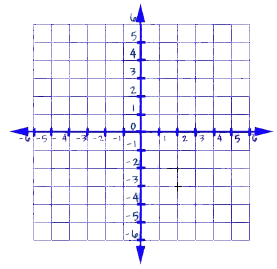- Translation - (slide) every point moves the same distance in the same direction. To translate points of a figure simply add the number of spaces moved horizontally to the x value and the number of spaces moved vertically to the y value.
- Reflection - (flip) figures can be flipped horizontally or vertically at any point or can be flipped across an axis. If you reflect figure across the x axis, change the y values in each point to their opposite to create reflected points.
- Rotation - (turn) the figure is turned around a single point. You describe the rotation in degrees either counter-clockwise or clockwise
Use this site to develop your understanding of transformations. Their are different levels you can choose as you get more comfortable with the concepts.




